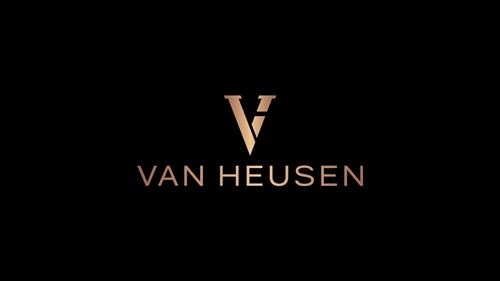Punjab, the land of five rivers, is renowned for its rich cultural heritage, lively music, and energetic dance forms. The traditional dances of Punjab reflect the joy, enthusiasm, and unity of its people. These dance forms, deeply embedded in the daily lives of Punjabis, celebrate harvest seasons, weddings, festivals, and social gatherings.
Punjabi folk dances are marked by their high energy, rhythmic beats, colorful attire, and expressive movements. Whether performed by men or women, each dance form carries a distinct identity and holds historical and social significance. Let’s take a look at the traditional dance forms of Punjab and their cultural importance.
1. Bhangra – The Iconic Dance of Punjab
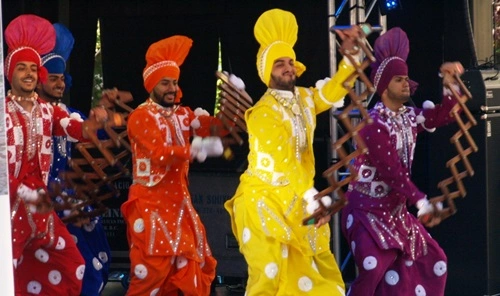
Bhangra is the most popular and globally recognized dance form of Punjab. Originally performed by farmers to celebrate the harvest season, Bhangra has evolved into a symbol of Punjabi culture worldwide.
- Features: Energetic jumps, shoulder movements, fast-paced beats of the dhol, and acrobatic steps.
- Themes: Celebration of farming, prosperity, and happiness.
- Occasions: Vaisakhi (harvest festival), weddings, and festive celebrations.
Bhangra is performed by men in vibrant kurtas, turbans, and lungis, while women also participate in modern variations of Bhangra. The beats of the dhol, combined with Punjabi folk songs, make this dance a thrilling spectacle.
2. Giddha – The Dance of Punjabi Women
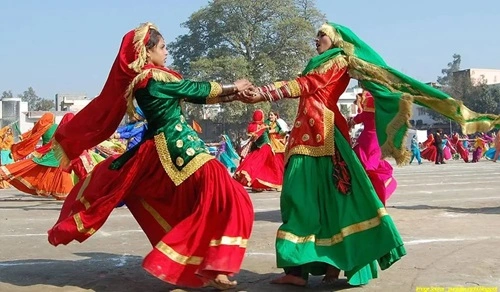
Giddha is the female counterpart of Bhangra, showcasing grace, expression, and storytelling through dance. Women form circles, clapping and singing boliyan (folk couplets) while performing synchronized movements.
- Features: Elegant gestures, rhythmic claps, expressive facial movements, and footwork.
- Themes: Social issues, family life, love, and humor.
- Occasions: Weddings, festivals like Lohri, Teeyan (monsoon festival), and special gatherings.
Giddha is performed in bright salwar-kameez, heavy jewelry, and colorful dupattas, making it a visually appealing dance form.
3. Jhummar – The Graceful Folk Dance
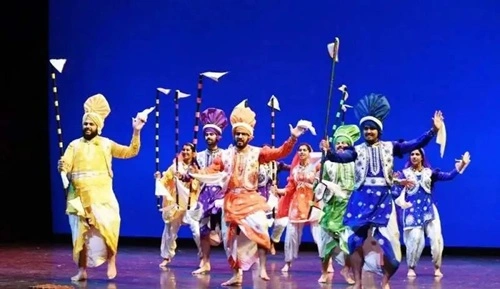
Jhummar is a slow, rhythmic dance performed mainly in the Sandhu, Attari, and Jat communities of Punjab. It is graceful, unlike the high-energy Bhangra, and is performed to celebrate joyful occasions.
- Features: Swaying movements, soft footwork, and relaxed shoulder gestures.
- Themes: Courtship, love, and nature.
- Occasions: Festivals, marriages, and celebrations.
Jhummar is performed by men, dressed in traditional Punjabi attire, accompanied by melodious folk tunes.
4. Luddi – The Dance of Victory
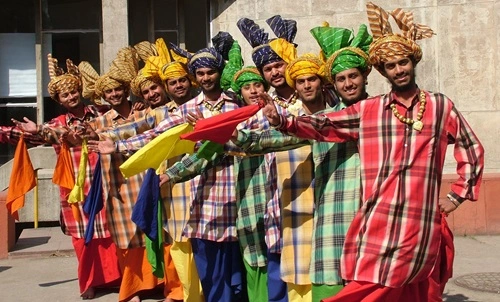
Luddi is a victory dance performed by men to celebrate success, especially in battles and sports. The dance includes slow movements, exaggerated shoulder shrugs, and backward bending gestures.
- Features: Unique head movements, shoulder shakes, and slow-paced rhythm.
- Themes: Celebrating victories and achievements.
- Occasions: Sporting events, weddings, and historic commemorations.
Luddi dancers often wear simple white kurtas with colorful turbans, making it a distinct dance form in Punjab.
5. Sammi – The Folk Dance of Women
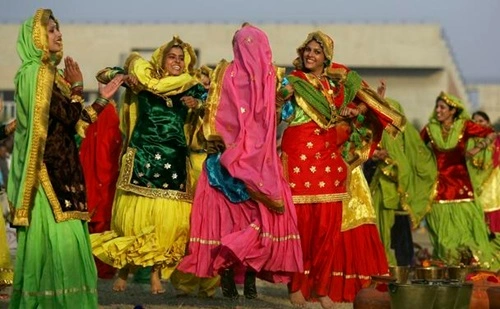
Sammi is a traditional women’s dance performed in rural Punjab, especially in the Sandhu, Jat, and Dogar communities. It is a soft, feminine dance, performed in circles with slow and graceful hand movements.
- Features: Swaying movements, slow claps, and melodious folk singing.
- Themes: Love stories, village life, and women’s emotions.
- Occasions: Festivals and cultural gatherings.
Dancers wear long embroidered kurtas and colorful dupattas, adding to the beauty of the performance.
6. Julli – The Devotional Dance
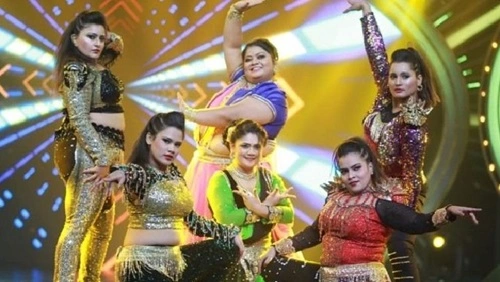
Julli is a spiritual dance form, traditionally performed by Sufi saints and their followers. Unlike other high-energy Punjabi dances, Julli is performed in a sitting position inside dargahs (Sufi shrines).
- Features: Repetitive swaying, clapping, and chanting of religious hymns.
- Themes: Devotion to God and spiritual enlightenment.
- Occasions: Religious gatherings and Sufi celebrations.
Julli is performed by male dancers, often dressed in simple white robes, reflecting spiritual purity.
7. Kikli – The Whirling Dance of Girls
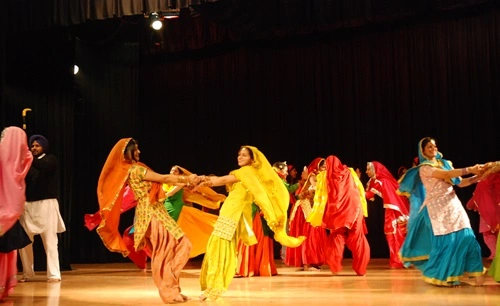
Kikli is a playful dance performed by young girls in pairs. They hold hands, twirl around, and sing folk songs.
- Features: Fast spinning, hand-in-hand movements, and joyful expressions.
- Themes: Friendship, happiness, and fun.
- Occasions: Festivals and village fairs.
Girls wear bright-colored salwar-kameez and often compete to see who can twirl the fastest.
8. Dankara (Gatka Dance) – The Martial Art Dance
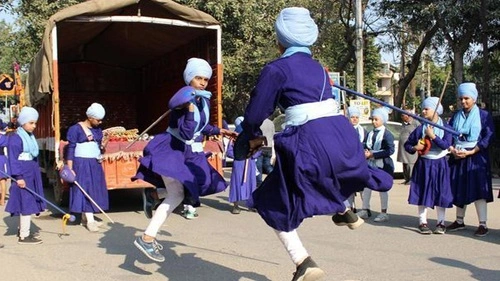
Dankara, also known as Gatka, is a martial arts-based dance performed with wooden sticks or swords. It was traditionally practiced by Sikh warriors as a form of self-defense training.
- Features: Swift movements, sword fighting, and synchronized formations.
- Themes: Bravery, valor, and warrior spirit.
- Occasions: Sikh festivals like Vaisakhi and Gurpurabs.
Gatka is still performed by Nihang Sikhs and at Sikh religious events, preserving Punjab’s warrior traditions.
9. Dhamal – The High-Energy Dance
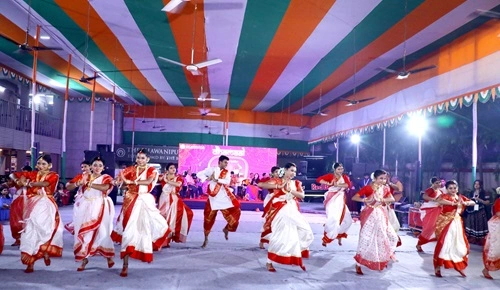
Dhamal is similar to Bhangra but performed with even more intensity and enthusiasm. It is mostly seen in rural areas and during major celebrations.
- Features: Vigorous jumping, rapid dhol beats, and dynamic footwork.
- Themes: Celebration of harvest, joy, and community bonding.
- Occasions: Weddings, fairs, and folk festivals.
Dhamal represents the unfiltered spirit and happiness of Punjab’s rural communities.
Conclusion
Punjab’s traditional dances are a true reflection of its culture, energy, and history. Whether it’s the festive beats of Bhangra, the graceful moves of Giddha, the warrior spirit of Gatka, or the spiritual devotion of Julli, each dance form holds a special place in Punjabi life.
These dances are not just performances but symbols of identity, joy, and cultural pride. Even today, Punjabi folk dances continue to thrive, not just in India but across the world, keeping the vibrant spirit of Punjab alive.
As Punjabi culture gains global recognition, it is essential to preserve and promote these traditional dances so that future generations can experience the rich heritage of Punjab. Whether in rural villages or international stages, the rhythm of Punjab’s folk dances continues to captivate hearts and spread happiness.
